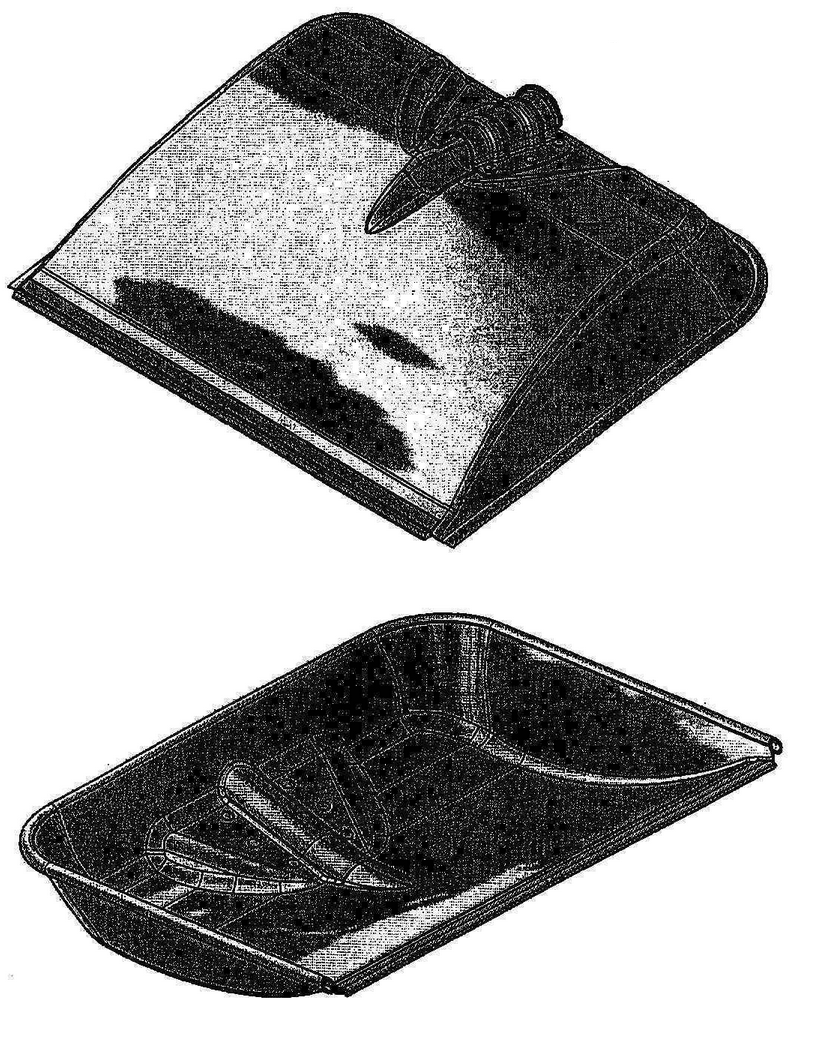Door driehoeken op een sneeuwschuiver
 Nietigheidsprocdure over Gemeenschapsmodel 809322-0001 voor een blad van een (sneeuw-)schuiver. Volgens de Invalidity Division en de Third Board of Appeal geen sprake van strijd met het eerdere Gemeenschapsmodel 670971-0001, aangezien het model door de toegevoegde driehoeken op meer dan ondergeschikte punten verschilt met het oudere model en het een andere algemene indruk wekt bij de geinformeerde gebruiker. Als gevolg van het gebruik van zwart-wit afbeeldingen in het modeldepot speelt kleur geen rol in de beoordeling van de geldigheid. Verschillen in donkere en lichtere vlakken kunnen echter wel in aanmerking worden genomen.
Nietigheidsprocdure over Gemeenschapsmodel 809322-0001 voor een blad van een (sneeuw-)schuiver. Volgens de Invalidity Division en de Third Board of Appeal geen sprake van strijd met het eerdere Gemeenschapsmodel 670971-0001, aangezien het model door de toegevoegde driehoeken op meer dan ondergeschikte punten verschilt met het oudere model en het een andere algemene indruk wekt bij de geinformeerde gebruiker. Als gevolg van het gebruik van zwart-wit afbeeldingen in het modeldepot speelt kleur geen rol in de beoordeling van de geldigheid. Verschillen in donkere en lichtere vlakken kunnen echter wel in aanmerking worden genomen.
In citaten:
Nieuwheid
20. The invalidity applicant has not argued against the contested decision’s findings that the contested RCD is not identical to the prior design. The Board endorses the conclusion of the contested decision that the prior design and the contested RCD are not identical within the meaning of Article 5 CDR (lack of novelty). The triangular shapes on the tray, the shape and darker tone of the joint, the slightly curved lateral frame and the darker tone of the inner and outer lateral sides of the shovel of the contested RCD constitute the main differences to the prior design which prevents an identity in this case.
De vrijheid van de ontwerper
26. The contested decision found that the freedom of the designer particularly with regard to the shape, size and material of the design is limited by the requirement that a shovel be capable of collecting snow or waste. Despite these technical
constraints, the designer has a wide choice of shapes, colours, materials and ornamentation left at his/her disposal. The Board agrees with this assessment, which has not been disputed by the invalidity applicant. When referring to the comparison with other shovels, the invalidity applicant concludes that the freedom of the designer for these products is large.
De algemene indruk bij de geïnformeerde gebruiker
28. The features that are shared by the designs represent the basic elements of a shovel, that is, a tray with a linear blade, a wall surrounding the tray on three sides, and a joint for the stick. With respect to these elements, the designer does not have a high degree of freedom in design, since they are characteristics required for technical reasons.
29. The differentiating features of the contested RCD in comparison to the prior design mentioned in the contested decision are:
− the ornamentation of the two triangles on the tray;
− the rectangular shape and tone of the joint for the stick.
30. Moreover, the Board observes two further differentiating features, namely:
− the slightly curved lateral frame;
− the darker tone of the inner and outer lateral sides of the shovel.
31. These last two features may be less striking. However, they contribute to a different perception of the overall impression produced by the two designs on the informed user.
32. The Board therefore concludes that the designs do not produce the same overall impression, especially when considering the limitations placed on the designer’s freedom due to the functionality of a shovel.























































































